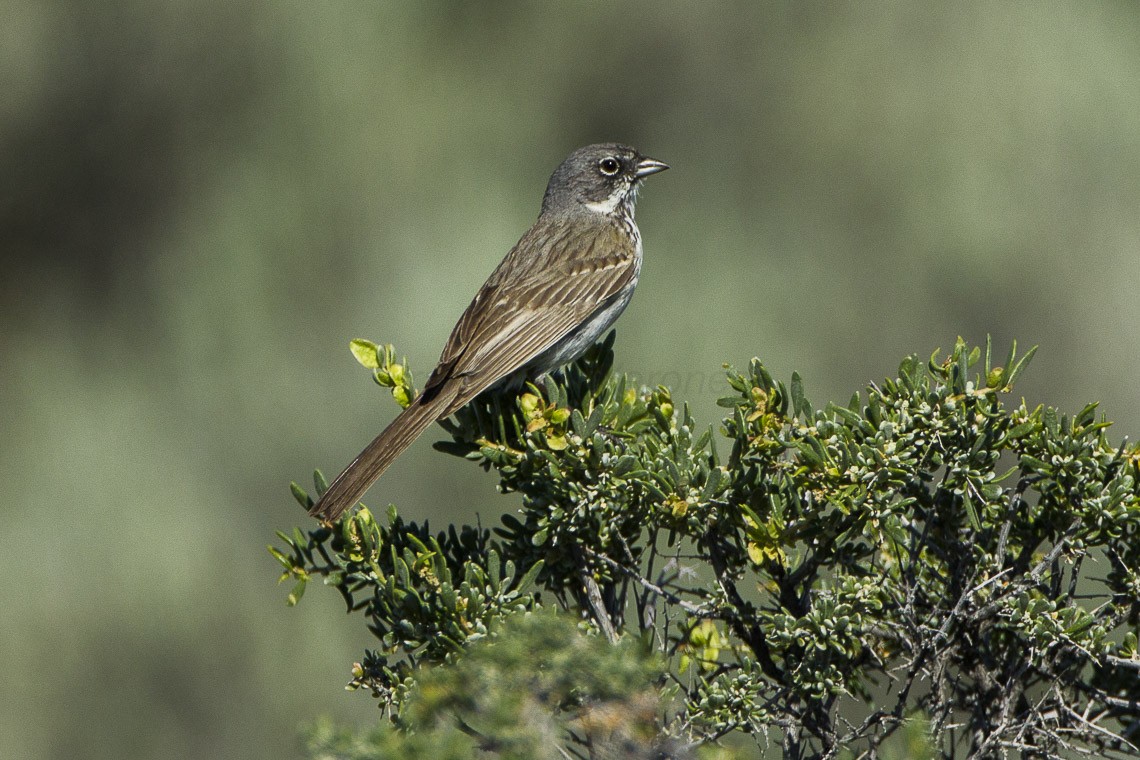Sagebrush Sparrow
A species of Sage sparrows Scientific name : Artemisiospiza nevadensis Genus : Sage sparrows
Sagebrush Sparrow, A species of Sage sparrows
Botanical name: Artemisiospiza nevadensis
Genus: Sage sparrows
Content
Description General Info
 Photo By Francesco Veronesi , used under CC-BY-SA-2.0 /Cropped and compressed from original
Photo By Francesco Veronesi , used under CC-BY-SA-2.0 /Cropped and compressed from original Description
The sagebrush sparrow (Artemisiospiza nevadensis) is a medium-sized sparrow of the western United States and northwestern Mexico. It used to be placed in the genus Amphispiza, but evidence from 2007 and 2009 suggested it be placed in its own genus. 
Size
16 cm (6.25 in)
Life Expectancy
6-9 years
Nest Placement
Shrub
Clutch Size
1 - 4 eggs
Incubation Period
1 - 3 broods
Number of Broods
10 - 16 days
Nestling Period
9 - 10 days
Feeding Habits
Sagebrush Sparrow is omnivorous and opportunistic, eating beetles, grasshoppers, other insects, spiders, seeds, fruits, and succulents during breeding. In nonbreeding seasons, sagebrush Sparrow primarily consumes seeds.
Habitat
Sagebrush Sparrow predominantly reside in shrubsteppe regions, thriving within the expanses of sagebrush, particularly Artemisia tridentata, alongside a variety of shrubs like saltbush and rabbitbrush. Preferring elevations below 5,600 feet, sagebrush Sparrow are typically found in semiopen habitats with shrubs around 1-2 meters high and may also inhabit sagebrush-juniper ecotones. During migratory and winter periods, sagebrush Sparrow form loose flocks in dry shrublands or grasslands, frequenting areas with vegetation such as creosote, yucca, and mesquite.
Nest Behavior
The female sagebrush Sparrow constructs the nest and lines it meticulously. Nest-building is timed with the breeding season, with eggs laid and cared for by both parents, who also attend to the young.
Nest Characteristics
Sagebrush Sparrow's nest is an open cup located in shrubs, bunchgrasses, or on the ground. It's made with twigs, grasses, bark, feathers, wool, and hair, measuring around 4 inches wide, with a 2.5-inch-wide, 2-inch-deep inner cup.
Dite type
Insectivorous
General Info
Feeding Habits
Bird food type
Bird Feeder Type

Platform
Behavior
Sagebrush Sparrow exhibit a predominantly inconspicuous nature, spending ample time swiftly maneuvering and foraging beneath dense shrubbery with their tails uniquely cocked and twitching upwards. During the spring and early summer breeding period, the males conspicuously perch atop shrubs, breaking into melodious song to establish territories, swiftly diving back to the ground post-performance for foraging or to engage in mate-guarding— a widespread avian behavior. Notably, sagebrush Sparrow are often already paired upon arrival at breeding sites, with male singing subtly shifting from mate attraction to a primary focus on territory defense. In nest construction, females take the lead while males persist in their vocal displays. These birds typically raise two broods per season, although brood counts can vary. Juveniles from initial broods may form small flocks in July, joining later with their successive brood counterparts and adults in late August. During their migratory phase, sagebrush Sparrow are known to form minor, eclectic flocks comprised of various sparrow species.
Species Status
Not globally threatened.
Scientific Classification
Phylum
Chordates Class
Birds Order
Perching birds Family
New world sparrows Genus
Sage sparrows Species
Sagebrush Sparrow